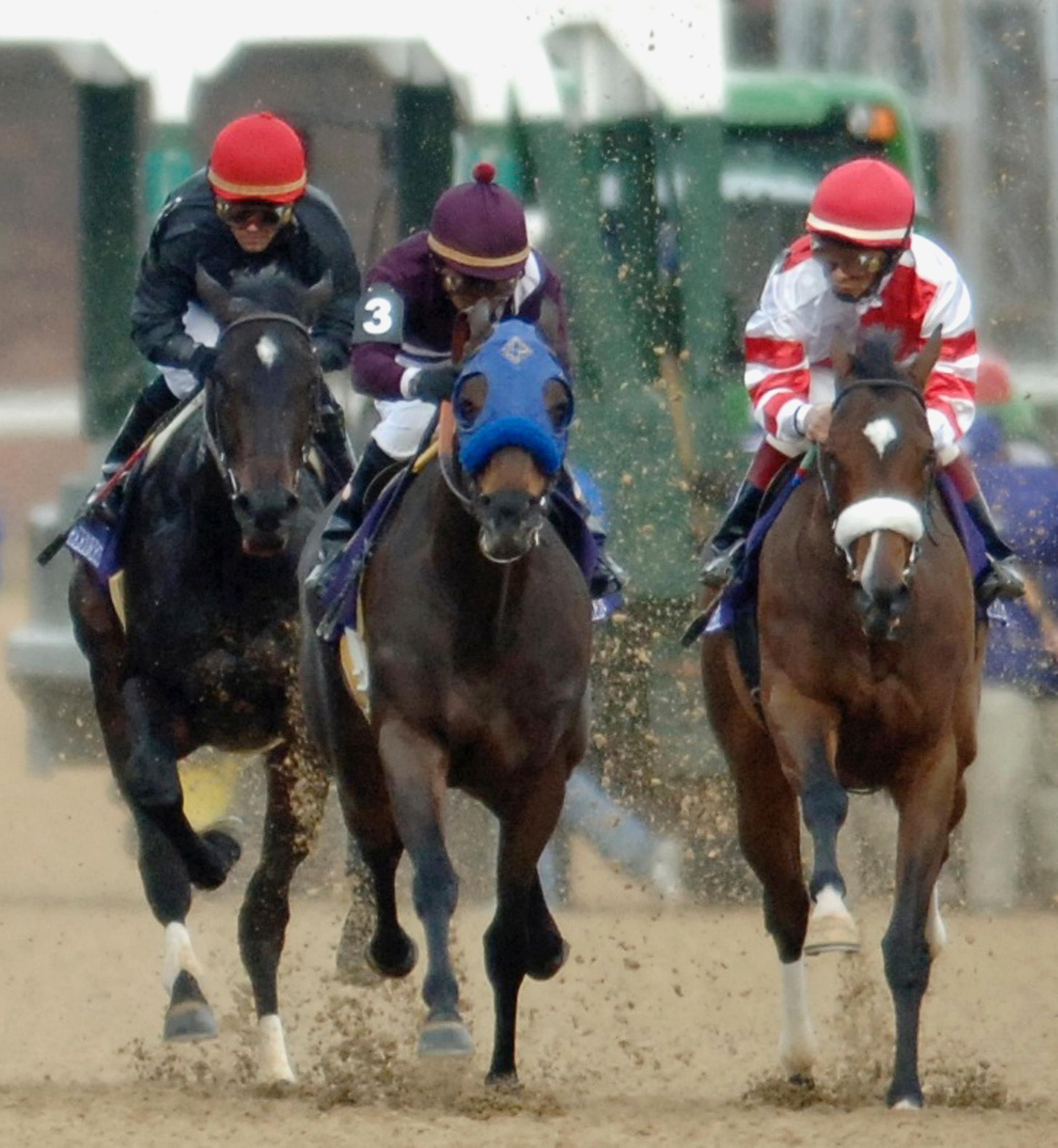Investigation finds startling mortality rate among horses at U.S. race tracks
Pine Island, left, ridden by jockey Javier Castellano races behind Healthy Addiction, center, ridden by Victor Espinoza and Round Pond, ridden by Edgar Prado, at the start of the Distaff race during the Breeders Cup at Churchill Downs in Louisville, Ky.,
Even casual horse racing fans know that horses, like 2006 Kentucky Derby winner Barbaro, are sometimes injured, even fatally, during their races.
But injuries and deaths to horses and their jockeys are becoming increasingly common around the country, particularly in smaller, less lucrative races.
The numbers tell a chilling story. On average 24 horses die at American tracks every week. The culprit, according to New York Times reporter Joe Drape, is a racing culture mired in performance-enhancing and pain-killing drugs, combined with lax state regulations. In one particular race, Drape’s team found that eight horses started the race and just one finished.
“A computer analysis of data from more than 150,000 races, along with injury reports, drug test results and interviews, shows an industry still mired in a culture of drugs and lax regulation and a fatal breakdown rate that remains far worse than in most of the world,” the Times wrote.
Drape said the investigation stretched over a year and represented the first time anyone had done a survey of the horse racing industry across all 50 states.
“Essentially, sadly, it confirmed my suspicions and everyone else’s suspicions that this happened at a far greater rate than anybody was willing to admit, and there was totally reasons why it happened, and we were able to identify some of them,” he said.
Among the multitude of factors, Drape found that horses who were racing while drugged and medicated were at a greater risk of breaking down on the track. And these aren’t necessarily performance enhancing drugs, so much as drugs that owners hope will get a horse that’s sore or already suffering from a minor injury to race anyway.
“That’s the tragedy. That’s the awful thing about it,” Drape said.
Part of the problem, the Times found, is that hose racing is losing popularity, and tracks are opening casinos on site. That’s led to money from slots being put into purses for winning horsemen, which makes running each race that much more important.
“A horse that’s worth $7,500 last year could run a race for $15,000, well, this year he’s running for almost $40,000,” Drape said. “So it encourages bad behavior.”
At one track near New York, 28 horses have died this year, which Drape said coincides with a 30 percent increase in the purses there after a resort casino opened.
“You have a system where money is encouraging bad behavior,” Drape said.
There’s no law and order in horse racing, Drape said, no central office that can set out rules for what owners can and can’t do. Some 28 different governing bodies control horse racing across the country — and they’re typically governed by political appointees, sometimes without any horse racing experience.
Part of the problem here, according to Drape, is the decline in popularity of the sport. With declining popularity comes declining interest in horse racing. In Europe and Asia, for example, horses die at a quarter of the rate they do in the United States.
“What do those have in common that we don’t? Among them is no medication on raceday. They run less. They run only half the year. They run on grass. Much greater care is taken,” Drape said.
And that, he says, has led to increased popularity for the sport in those nations.
Drape said federal legislation is being considered to regulate horse racing, but given the toxic political climate in Washington, it’s hard to expect that to be successful soon.
“You hope for the best, but I don’t know what to expect,” Drape said.
